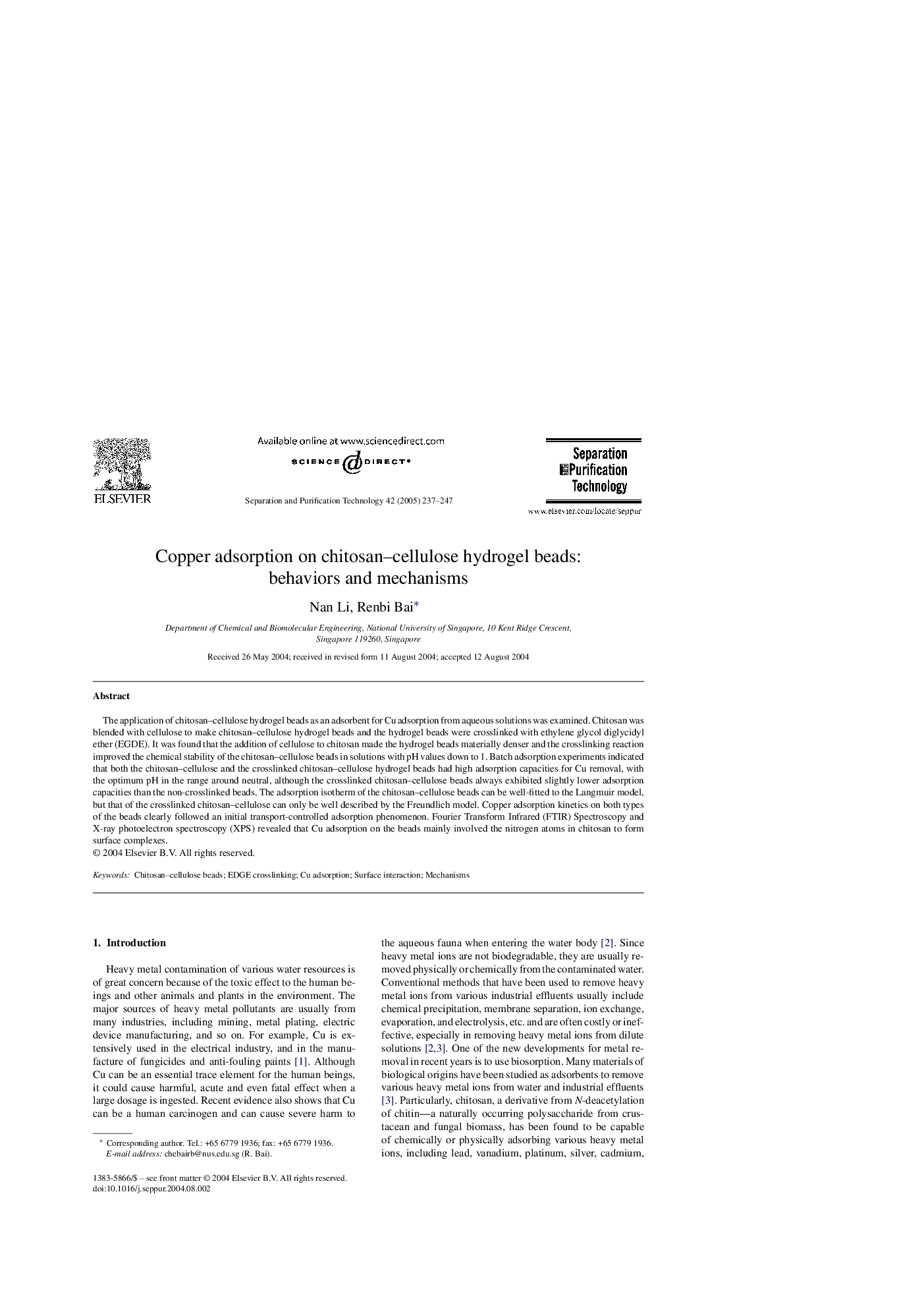| کد مقاله | کد نشریه | سال انتشار | مقاله انگلیسی | نسخه تمام متن |
|---|---|---|---|---|
| 10389840 | 884402 | 2005 | 11 صفحه PDF | دانلود رایگان |
عنوان انگلیسی مقاله ISI
Copper adsorption on chitosan-cellulose hydrogel beads: behaviors and mechanisms
دانلود مقاله + سفارش ترجمه
دانلود مقاله ISI انگلیسی
رایگان برای ایرانیان
موضوعات مرتبط
مهندسی و علوم پایه
مهندسی شیمی
تصفیه و جداسازی
پیش نمایش صفحه اول مقاله

چکیده انگلیسی
The application of chitosan-cellulose hydrogel beads as an adsorbent for Cu adsorption from aqueous solutions was examined. Chitosan was blended with cellulose to make chitosan-cellulose hydrogel beads and the hydrogel beads were crosslinked with ethylene glycol diglycidyl ether (EGDE). It was found that the addition of cellulose to chitosan made the hydrogel beads materially denser and the crosslinking reaction improved the chemical stability of the chitosan-cellulose beads in solutions with pH values down to 1. Batch adsorption experiments indicated that both the chitosan-cellulose and the crosslinked chitosan-cellulose hydrogel beads had high adsorption capacities for Cu removal, with the optimum pH in the range around neutral, although the crosslinked chitosan-cellulose beads always exhibited slightly lower adsorption capacities than the non-crosslinked beads. The adsorption isotherm of the chitosan-cellulose beads can be well-fitted to the Langmuir model, but that of the crosslinked chitosan-cellulose can only be well described by the Freundlich model. Copper adsorption kinetics on both types of the beads clearly followed an initial transport-controlled adsorption phenomenon. Fourier Transform Infrared (FTIR) Spectroscopy and X-ray photoelectron spectroscopy (XPS) revealed that Cu adsorption on the beads mainly involved the nitrogen atoms in chitosan to form surface complexes.
ناشر
Database: Elsevier - ScienceDirect (ساینس دایرکت)
Journal: Separation and Purification Technology - Volume 42, Issue 3, April 2005, Pages 237-247
Journal: Separation and Purification Technology - Volume 42, Issue 3, April 2005, Pages 237-247
نویسندگان
Nan Li, Renbi Bai,